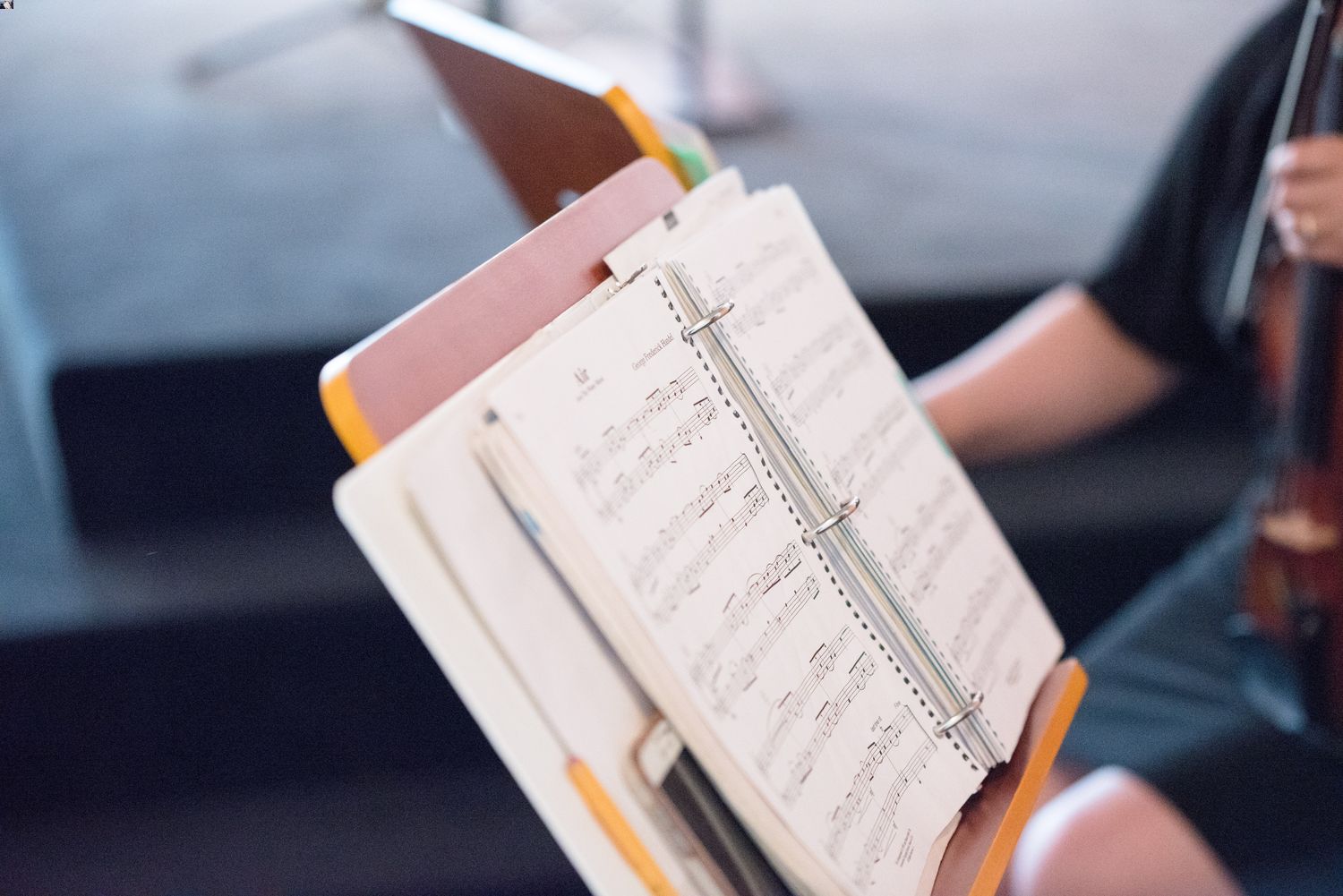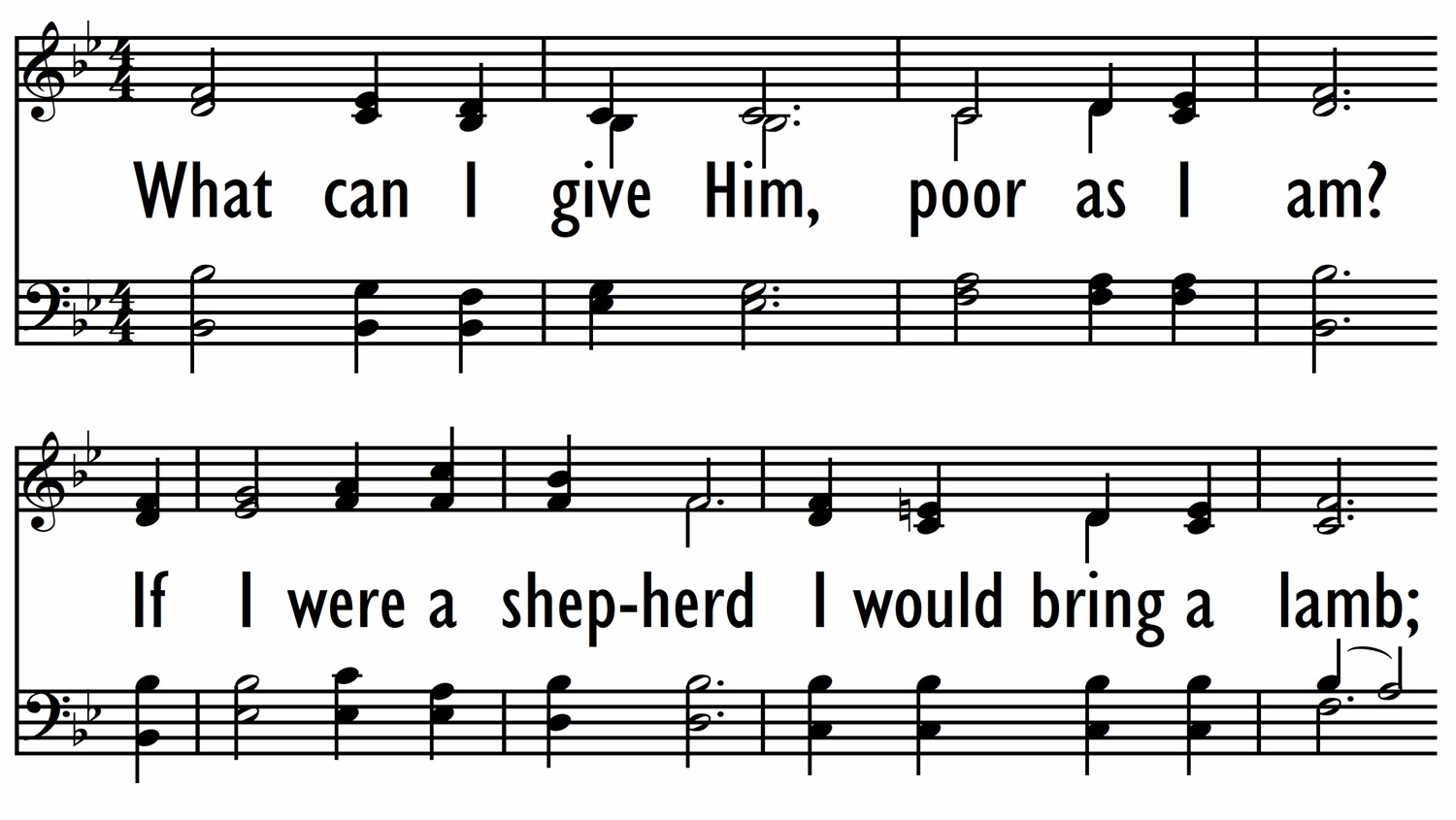Home>Production & Technology>Music Theory>Analysis Purcell When I Am Laid Music Theory Chromatic Bass


Music Theory
Analysis Purcell When I Am Laid Music Theory Chromatic Bass
Published: January 31, 2024
Discover the intricate analysis of Purcell's composition "When I Am Laid" and explore the chromatic bass techniques in music theory. Enhance your understanding with this in-depth examination.
(Many of the links in this article redirect to a specific reviewed product. Your purchase of these products through affiliate links helps to generate commission for AudioLover.com, at no extra cost. Learn more)
Table of Contents
Introduction
Music Theory is an essential component in understanding the mechanics and intricacies of music composition. It provides a framework for analyzing, interpreting, and appreciating various musical elements, such as melody, harmony, rhythm, and form. One particular area of interest in Music Theory is the examination of chromatic bass progressions.
Chromatic bass progressions refer to the use of chromatic notes in the bass line of a musical piece. These notes are outside of the standard diatonic scale and add a distinct richness and complexity to the harmony. One notable example of a composition featuring chromatic bass progressions is Henry Purcell’s “When I Am Laid”.
Henry Purcell, an influential English composer of the Baroque period, was known for his innovative and expressive compositions. “When I Am Laid” is a poignant aria from his opera “Dido and Aeneas”. The opera tells the tragic love story of Dido, the Queen of Carthage, and Aeneas, the Trojan hero. In this particular aria, Dido laments her impending loss and expresses her anguish and grief.
By delving into the music theory behind “When I Am Laid”, we can uncover the brilliance and complexity of Purcell’s composition. This article will provide a comprehensive analysis of the piece, focusing on the use of chromatic bass progressions and their impact on the overall musical structure. By examining the harmonic choices and the emotional effect they create, we can gain a deeper appreciation of Purcell’s artistic genius.
Background of Purcell’s “When I Am Laid”
“When I Am Laid” is a powerful and emotionally charged aria from Henry Purcell’s opera “Dido and Aeneas”. The opera, first performed in 1688, tells the tragic story of the Queen of Carthage, Dido, and her love affair with the Trojan hero, Aeneas. The aria is sung by Dido in the final act of the opera, as she faces the imminent departure of Aeneas and the heartbreak that follows.
Purcell’s “When I Am Laid” is a prime example of a lament, a musical form that expresses grief and sadness. As such, it features a mournful and somber tone with a slow tempo, allowing the emotions to be conveyed with depth and intensity.
What sets “When I Am Laid” apart is Purcell’s clever use of chromatic bass progressions to heighten the emotional impact of the piece. The chromaticism adds tension and a sense of longing, effectively reflecting Dido’s internal struggle and her impending separation from Aeneas.
The aria begins with a simple, plaintive melody accompanied by an ascending chromatic bass line. This descending chromatic bass progression sets a melancholic tone and creates a sense of longing and despair. As the aria progresses, Purcell further explores the possibilities of chromaticism, incorporating various chromatic passages and non-diatonic chords to add complexity and emotional depth to the composition.
Purcell also expertly uses dissonance and resolution in “When I Am Laid” to intensify the emotional impact of the piece. Dissonant chords and intervals, such as augmented fourths and diminished fifths, are strategically employed to evoke a sense of tension and agony. These dissonances resolve into consonant harmonies, providing moments of relief and release.
Overall, the background of Purcell’s “When I Am Laid” showcases the composer’s profound understanding of musical expression and his ability to use chromaticism and dissonance to convey intense emotion. Through his masterful composition, Purcell captures the heart-wrenching experience of loss and longing, making “When I Am Laid” a timeless and captivating piece of music.
Music Theory Analysis of the Piece
As we dive into the music theory analysis of Purcell’s “When I Am Laid”, we uncover the intricate harmonic structure and the use of chromatic bass progressions that contribute to the emotional impact of the piece.
The opening of “When I Am Laid” features a descending chromatic bass line, starting from the tonic and moving to the dominant. This chromatic descent creates a sense of melancholy and longing, setting the tone for the aria. It also provides a strong foundation for the subsequent harmonies and melodies to unfold.
Purcell incorporates various non-diatonic chords throughout the piece, adding richness and complexity to the harmonic progression. One striking example is the use of secondary dominants. These chords, which are not within the key, create tension and drive the harmonic motion forward. They serve to enhance the emotional impact of the aria, emphasizing the sorrow and despair in Dido’s lament.
In addition to chromatic bass progressions and non-diatonic chords, Purcell employs suspensions to great effect in “When I Am Laid”. Suspensions occur when a note from the previous chord is held over into the next chord, creating dissonance before resolving to a consonant note. The dissonance and subsequent resolution serve as a musical representation of the conflict and release of emotions experienced by Dido.
Another noteworthy aspect of the music theory in this piece is the use of modulations. Purcell skillfully navigates between different keys, heightening the emotional impact and creating a sense of musical and emotional journey. These modulations serve to intensify Dido’s sorrow, mirroring her changing emotional state as she reflects on her impending loss.
As the aria progresses, Purcell introduces intricate melodic lines that intertwine with the harmonies. These melodies are often ornamented with trills, turns, and other embellishments, adding a sense of emotional depth and virtuosity to the performance. These melodic flourishes add to the expressive nature of the aria and highlight Purcell’s prowess as a composer.
In summary, the music theory analysis of Purcell’s “When I Am Laid” reveals the thoughtful and deliberate choices made by the composer to convey intense emotions. The chromatic bass progressions, non-diatonic chords, suspensions, modulations, and ornamental melodic lines all contribute to the overall impact of the piece, showcasing Purcell’s mastery of musical composition and his ability to touch the depths of the human soul.
Understanding the Chromatic Bass Progressions
Chromatic bass progressions play a crucial role in the emotional impact and harmonic complexity of Purcell’s “When I Am Laid”. These progressions involve the use of chromatic notes, which are notes outside of the standard diatonic scale, in the bass line of the composition.
The inclusion of chromatic bass progressions adds a sense of tension and richness to the harmonic framework of the piece. It introduces unexpected and colorful notes that create a unique and evocative sound. In “When I Am Laid”, Purcell strategically employs chromatic bass progressions to enhance the emotional intensity and expressiveness of the composition.
One notable chromatic bass progression in the piece is the descending chromatic line that appears at the beginning of the aria. This descending line moves from the tonic to the dominant, contributing to the melancholic and longing atmosphere of the music. The use of chromaticism in this manner allows Purcell to create a sense of yearning and anticipation, mirroring Dido’s emotions as she laments her impending loss.
Purcell also incorporates chromaticism through the use of chromatic passing tones. These are chromatic notes that connect two diatonic notes, creating a smooth and melodic line. By utilizing chromatic passing tones in the bass line, Purcell adds movement and fluidity to the harmony, avoiding static or predictable progressions. This gives the music a sense of emotional depth and momentum.
Furthermore, Purcell employs chromatic alterations to chords to enhance the harmonic complexity of the composition. These alterations include adding chromatic notes to existing chords or substituting diatonic chords with chromatic chords. These choices create unexpected tonalities and tensions that heighten the emotional impact of the music.
It is important to note that while the chromatic bass progressions in “When I Am Laid” add complexity and emotional depth, they are always integrated harmonically and melodically. Purcell carefully crafts these chromatic elements to fit within the overall harmonic structure of the piece, ensuring that they contribute to the expressive power of the aria without detracting from its coherence or accessibility.
Through the understanding of the chromatic bass progressions in “When I Am Laid”, we gain insight into Purcell’s ingenuity as a composer. His use of unexpected and colorful chromatic elements elevates the emotional impact of the composition, highlighting the anguish and longing experienced by Dido. This harmonic complexity and expressiveness make “When I Am Laid” a captivating piece that continues to resonate with audiences today.
Conclusion
Henry Purcell’s “When I Am Laid” is a masterpiece of musical composition that showcases the power and emotional depth that can be achieved through the use of chromatic bass progressions. This aria, from the opera “Dido and Aeneas”, exemplifies Purcell’s ability to convey intense emotions through his innovative harmonic choices.
Through a music theory analysis, we have delved into the intricacies of “When I Am Laid” and explored how Purcell expertly utilized chromatic bass progressions to enhance the emotional impact of the piece. The descending chromatic line, chromatic passing tones, and chromatic alterations in the bass line all contribute to the sense of longing, sorrow, and anticipation that permeates the aria.
Purcell’s composition demonstrates the power of chromaticism in music, showcasing how these non-diatonic notes can add tension, depth, and complexity to a composition. The meticulous integration of chromatic elements in “When I Am Laid” reveals Purcell’s mastery of musical expression and his ability to touch the hearts of listeners through his harmonic choices.
By understanding the chromatic bass progressions in “When I Am Laid”, we gain insight into the emotional journey that Dido, the protagonist of the opera, experiences. The use of chromaticism reflects her anguish, longing, and impending loss, evoking a powerful and heart-wrenching response from the listener.
Purcell’s “When I Am Laid” stands as a testament to the timeless significance of music theory and its role in the creation of deeply moving and impactful compositions. The exploration of its chromatic bass progressions not only enriches our understanding of the piece but also allows us to appreciate the genius of Henry Purcell and his ability to evoke profound emotions through his musical craftsmanship.
As we continue to delve into the world of music theory, it is crucial to recognize the significance of chromatic bass progressions and their ability to transform a composition into a deeply resonant and emotionally charged experience. So, the next time you listen to Purcell’s “When I Am Laid” or any composition that incorporates chromaticism, take a moment to appreciate the intricacies of the harmonic choices and the emotional impact they create.











